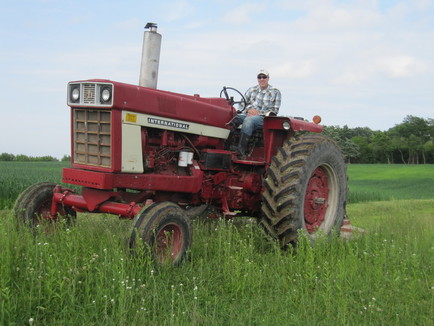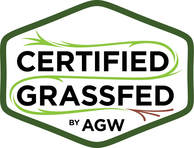 One day not long after we bought the farm in 2012, I was alone in the farmstead, looking out over the empty fields, and said to myself “What the hell did you get yourself into? THIS IS GOING TO KILL YOU!!!” Well, I’m still alive and kicking, and I will tell you the story of how I became a farmer. For 30 years I had a successful career in the commodity markets in Chicago. I worked, traded, and brokered on the floors of the Chicago Board of Trade and Chicago Mercantile Exchange. Later, I managed a very active futures trading desk, working with clients all over the world. This satisfied my wanderlust and opened my eyes to people and cultures globally; a long way from home for a kid from Kenosha, Wisconsin. During my 30 years in the commodity markets, I traded, among other things, all the agriculture products. Many of these were conventional commodity markets like GMO corn and soybeans, wheat, cattle, hogs, among others. I was a “paper farmer” then! I understood the “Big AG” way of producing food: produce calories the cheapest way possible. After the financial crisis of 2008, I floated the “investment idea” of buying a farm to my wife. This was with the intention of renting out the land to a farmer. Once we bought the farm in 2012 and were ready to rent it, my wife, who is a certified health coach, expressed she did not want to farm the land conventionally (even as a rental!) and that it had to be organic. Her foresight gave me the appreciation of farming with a conscience of the land, the animals, and our health, but made it tough to find a farmer to work it. That’s when we decided to do it ourselves. With lots of reading and studying, and a great mentor (thanks to the wonderful mentorship program from MOSES) we were ready! The more I read and learned, the more dreams I had for our farm. The first couple of years were spent improving the land and soil itself, and getting the nutrients back from the depletion of planting and harvesting conventional crops year after year. In 2015, when we started buying cattle, I came to a crossroad in my life. The company I helped grow into one of the largest futures brokerage firms, was bought out and going through corporate changes. After 24 years working there, I was let go. At that time, I did a lot of soul searching about what was important to me and what I wanted to do the second half of my life. My wife in her wisdom said, “I will support you if you want to go back into the financial industry or work the farm, but you just can’t do both.” At this point in my life, I didn’t want to have regrets about not starting the farm business and letting this dream die. The easy choice was to go back into the world that was safe for me (finance) but I made the hard choice! In my previous work, the bottom line was always about profit, many times disregarding other consequences by the making of money (like harming the environment, our health, our communities). My work as an organic farmer has changed the way I view business. I may still be a capitalist in some ways, but I have a different perspective. Success is not about “making more money” by exploiting resources. To me, success is being healthy. Having my family, friends, and clients healthy. Success is having a clean environment for my children. Success is deepening our connections to our community.. Our farm philosophy is that we improve people’s health with the nutritious food we grow, improve our soil health and our environment by our sustainable farming practices, and deepen our connection to our communities, then the bottom line will take care of itself, and I will consider myself TRULY successful!
12 Comments
 Grass-fed beef is much lower in fat than its corn fed counterpart. This may mean that your beef can dry up faster or become overcooked much quicker than corn fed. Without the added fat from corn, grass-fed beef tastes like... well, beef! but you want to know how to cook it properly. The name of the game is to keep the meat moist, an easy task when you consider the following tips:
Happy cooking and enjoy your beef! The secret to chili is how you select and use your chili peppers. If dried ancho and chipotle peppers are not available in your local market, just substitute, bearing these points in mind: dried chiles have a richer, fruitier flavor than fresh; smaller chiles are hotter than larger ones; the seeds and white veins generally contain all the heat but no chili flavor; and finally, if you like great chili flavor but are less enamored with the spice, add one whole chili pepper to the pot, but remove it before serving. The recipe below is for a medium-hot chili.
On a budget. Minimum Preparation. Serves 6. For the chili:
For the topping:
Cover beans with warm water, stir in lemon juice, cover, and soak in a warm place for 18 to 24 hours. Drain, rinse, and place in a slow cooker. In a skillet over medium-low heat, brown the ground beef in olive oil. Combine the meat and remaining chili ingredients in the slow cooker, and cook on high for 4 to 5 hours or on low for 8 to 10 hours, until the beans are tender. Depending on how your cooker works, you may need to add an extra ½ cup of water during the cooking time to prevent the chili from drying out. Remove the whole chipotle pepper. Serve the chili topped with shredded cheese and a generous dollop of sour cream. Extremely nutritious liver was a weekly fare in many households until concerns about cholesterol and toxins threw it off the American menu. However, the availability of liver from grass fed animals answers this issue and permits liver to return to our tables!
On a budget, minimum preparation, serves 2 to 4.
Slice the beef liver into strips, about ½ in wide. Place strips in a small bowl, soak in lemon juice, adding more if necessary. Cover the bowl, and marinate the meat several hours or overnight in the refrigerator. Preheat oven to 350F Mix the apples, onion, salt, pepper. Heat the butter in a frying pan and sauté the mixture until the onion is translucent and the apples are crisp-tender, about 5 to 6 minutes. Set aside. Remove the liver from the lemon juice, pat dry, and place in the bottom of a buttered baking dish. Pour the apple/onion mixture over the liver. Arrange the bacon slices on top and pour in hot water. Sprinkle with the paprika. Cook for 20-30 minutes, or until the liquid is bubbling and the apples are soft. Serve immediately. Recipe from "The Grassfed Gourmet Cookbook" by Shannon Hayes. |
AuthorMarisa usually writes about nutrition, grass fed beef, organic agriculture, as well as sharing delicious recipes; Paul writes about farm work- sharing his stories and experiences, and most times... we both collaborate on the stories! Archives
March 2024
Categories
All
|
 RSS Feed
RSS Feed


